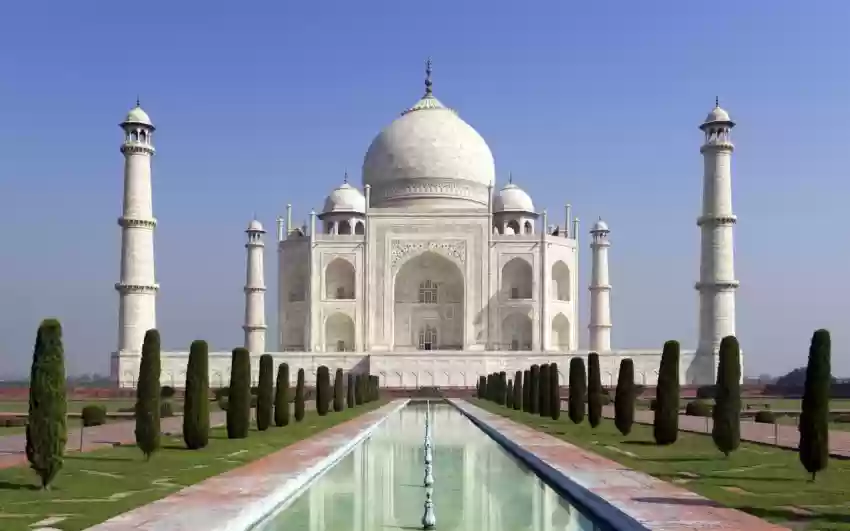Title: Taj Mahal: A Monument to Eternal Love and Architectural Marvel
Introduction:
Standing majestically on the banks of the Yamuna River in Agra, India, the Taj Mahal is more than just a monument; it’s a testament to love, beauty, and architectural brilliance. Built by Emperor Shah Jahan in memory of his beloved wife Mumtaz Mahal, the Taj Mahal is one of the most iconic and enduring symbols of India’s rich cultural heritage. In this blog, we’ll delve into the history, architecture, and enduring allure of the Taj Mahal, a masterpiece that continues to captivate hearts and minds around the world.
A Love Story Carved in Marble:
The story of the Taj Mahal is a tale of enduring love and devotion. Commissioned by Emperor Shah Jahan in 1632 as a mausoleum for his beloved wife Mumtaz Mahal, who died during childbirth, the Taj Mahal is a poignant tribute to their eternal love. Legend has it that Shah Jahan was grief-stricken by Mumtaz Mahal’s death and vowed to create a monument so beautiful and magnificent that it would be remembered for centuries to come. The result is the Taj Mahal, a shimmering white marble masterpiece that stands as a symbol of undying love and devotion.
Architectural Splendor:
Renowned for its architectural beauty and symmetry, the Taj Mahal is a masterpiece of Mughal architecture. Designed by architect Ustad Ahmad Lahauri, the Taj Mahal blends elements of Persian, Islamic, and Indian architectural styles to create a harmonious and awe-inspiring structure. The main mausoleum is flanked by four minarets, each standing over 40 meters tall, while the central dome rises to a height of 73 meters, adorned with intricate calligraphy and decorative motifs. The use of white marble, semi-precious stones, and elaborate carvings adds to the grandeur and opulence of the Taj Mahal, making it a sight to behold from every angle.
Symbolism and Significance:
Beyond its architectural beauty, the Taj Mahal holds deep symbolic significance in Indian culture and history. As a UNESCO World Heritage Site, it represents the pinnacle of Mughal art and architecture and serves as a symbol of India’s rich cultural heritage. The Taj Mahal also holds religious significance, with its design incorporating elements of Islamic architecture, such as the use of geometric patterns and calligraphy from the Quran. For visitors from around the world, the Taj Mahal is a place of pilgrimage, reflection, and reverence, where they can marvel at its beauty and contemplate the enduring power of love and devotion.
Enduring Legacy:
Over four centuries since its completion, the Taj Mahal continues to inspire and enchant visitors from every corner of the globe. Whether bathed in the soft light of dawn, shimmering in the midday sun, or glowing under the moonlit sky, the Taj Mahal never fails to evoke a sense of wonder and awe. Its timeless beauty transcends boundaries of time and space, reminding us of the enduring power of love and the timeless allure of great architecture.
Conclusion:
The Taj Mahal stands as a testament to the enduring power of love, beauty, and human creativity. As one of the most iconic landmarks in the world, it continues to capture the imagination of millions, drawing visitors from far and wide to marvel at its architectural splendor and profound symbolism. A visit to the Taj Mahal is not just a journey through history; it’s an experience that leaves an indelible mark on the soul, reminding us of the timeless values of love, devotion, and artistic excellence that continue to inspire us to this day.



